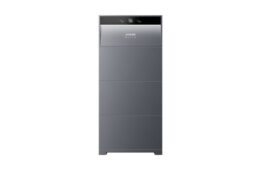Technology group Wärtsilä has completed UL 9540A fire safety testing of its GridSolv Quantum energy storage system (ESS).
 Overseen by Wärtsilä’s fire safety partners and stakeholders – including Fire & Risk Alliance (FRA), Energy Safety Response Group, and Energy Security Agency – the testing was completed at a facility in Piqua, Ohio, and run by the Energy Safety Response Group.
Overseen by Wärtsilä’s fire safety partners and stakeholders – including Fire & Risk Alliance (FRA), Energy Safety Response Group, and Energy Security Agency – the testing was completed at a facility in Piqua, Ohio, and run by the Energy Safety Response Group.
Under the test conditions, a fire was ignited within a ventilated unit and was allowed to free-burn for more than eight hours. The results showed that a fire would remain contained within the initiating unit, doors would remain closed and the fire would not result in unit-to-unit propagation.
As part of the testing, FRA captured plume gas data to assess the potential environmental impact of the smoke emitted by an ESS fire. FRA’s analysis concluded that the smoke from an ESS fire is no worse in terms of environmental impact than fires involving normal consumer products.
“Wärtsilä’s bespoke testing is the ideal way to demonstrate that a fire will not propagate between ESS enclosures or from string to string. This outcome illustrates that with minimal or no response from the fire service or other responders, a fully involved fire is unlikely to spread beyond the initiating unit,” said Noah Ryder, PhD, Managing Partner, Fire & Risk Alliance.
“As the risks posed by energy storage systems are better understood by AHJs, the desire to incorporate even more data into the safety analysis requires greater scale and evolution in testing. Test results such as those from large-scale fire tests help inform this process, which overall allows for better analysis and satisfaction of code requirements,” said Nick Warner, Principal, Energy Safety Response Group. “In the case of Wärtsilä, once the system was fully involved [fully on fire], the risk to neighboring units was minimal and could be managed by a well-trained fire department with proper planning and support.”
Wärtsilä’s GridSolv Quantum is a fully integrated modular and compact ESS. It achieved UL 9540 certification in April 2022 and completed UL 9540A unit-level performance testing in February 2023. Wärtsilä’s GridSolv Quantum uses lithium-iron-phosphate (LFP) batteries.
News item from Wärtsilä





What a load of BS, tell that to the Hamshire Cabinet Company in Piqua, Ohio where ESRG was doing open outdoor burning of 40,000 lb lithium ion batteries through the night and in the morning when employees came to work and their manufacturing factory filled with the battery burning smoke and made employees sick to the point they had to shut down the plant and send home employees.
Or the ppl that live across Swift Run from them and it choked them up and had to shut their windows all the while Swift Run was covered with a bluish gray smoke that covered the lake.
Join the Facebook page ” Toxic Piqua” and read the post of all of it and how a handful of concerned citizens uncovered all kinds of information the city was hiding from the citizens in order to allow ESRG to burn them for 5 years.
On top of all that Swift Run is one of our 3 water ways that Piqua draws water for our drinking and bathing water and the burning was less then 100 yards away and a dog park directly across the street and next door to Hampshire Cabinet Co. and a bike part between the burning and Swift Run. WTH were they thinking.
The citizens brought it to light at the commission meeting and the city leaders all had amnesia and played stupid and continued to lie to us about it even when they were shown documents proving they knew it was going on.
This article looks like one the city would put out, full of BS, I’d be ashamed of myself if I wrote this.
“Wärtsilä’s GridSolv Quantum is a fully integrated modular and compact ESS. It achieved UL 9540 certification in April 2022 and completed UL 9540A unit-level performance testing in February 2023. Wärtsilä’s GridSolv Quantum uses lithium-iron-phosphate (LFP) batteries.”
All of this is a result of the Mc Micken switching station fire and explosion of one of the APS ESS units in Arizona that was built by Fluence using LG Chem., battery cells. The event in 2019 was investigated to ‘death’ and it was found that ,yes, NMC battery chemistries with volatile electrolytes make their own oxygen even when a gas fire supression system is in place, it can only hold a flash over until somehow the system is exposed to outside air. The determination industry wide in utility ESS construction. Combine cells into battery packs that are “contained” in a ‘box’ where only a few cells will burn and the rest of the battery storage system is isolated from direct flame, heat from the burning cells. Vent, yes, vent the interior cabinet battery enclosures to the outside air to allow volatile gasses to dissipate outside instead of pool on the inside of the ESS unit. Finding a high energy density solid-state battery chemistry would be a technology answer and overall reduction in the possibility of a thermal run away fire in any ESS unit, not using wet chemistry electrolytes. Keep a separator between all electronics like PSU, inverter unit(s) and A.C. interface wiring and the actual storage batteries.